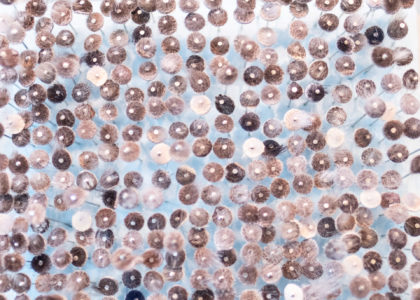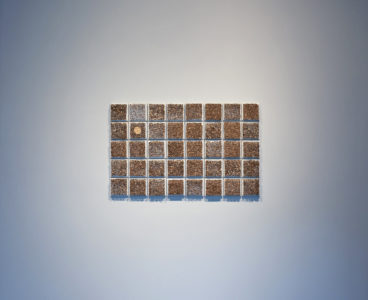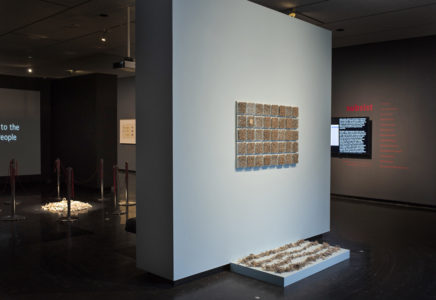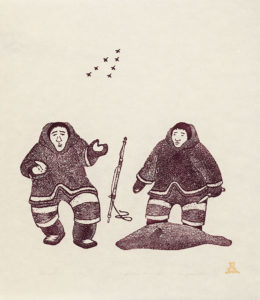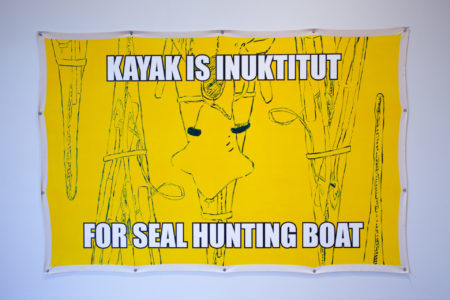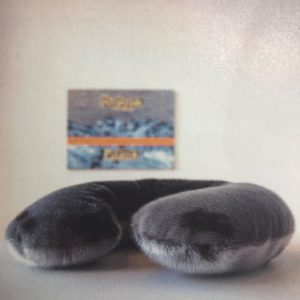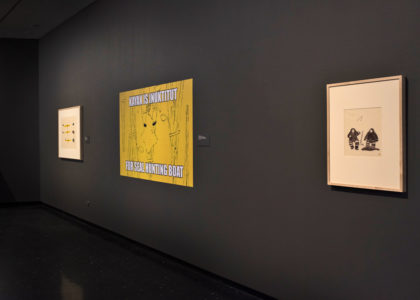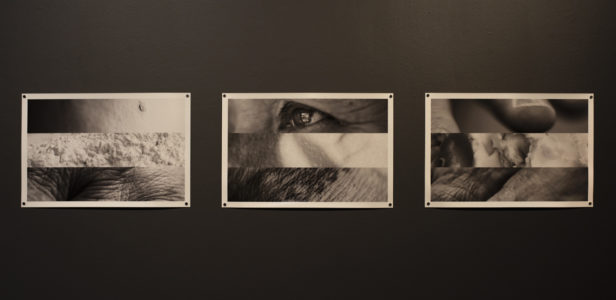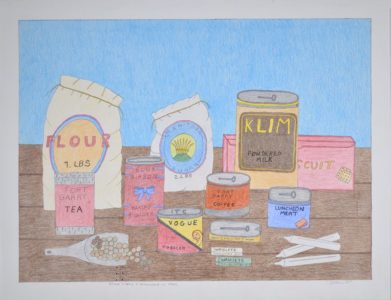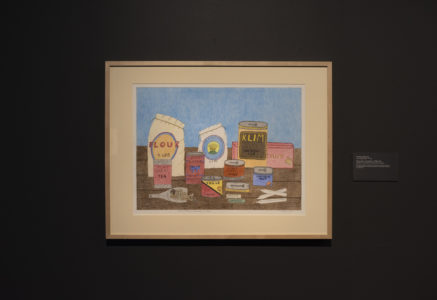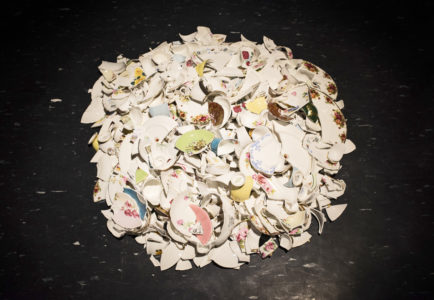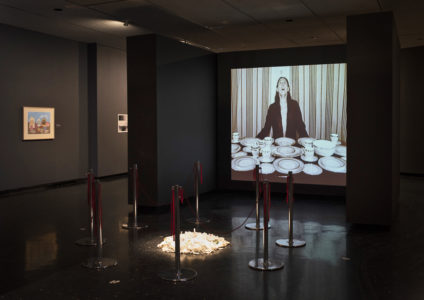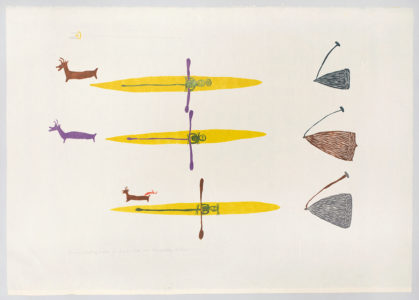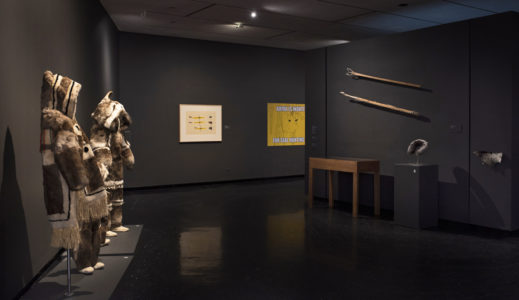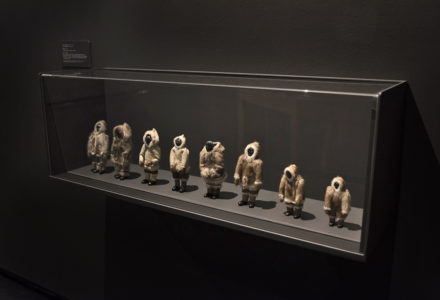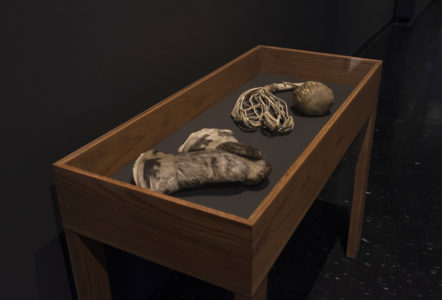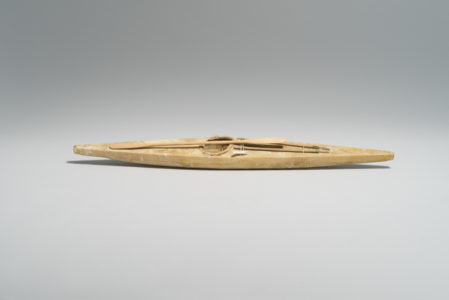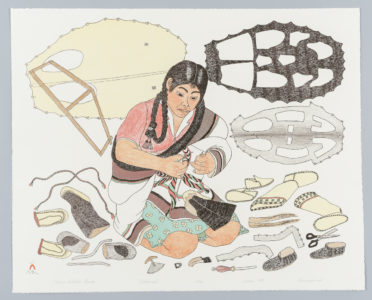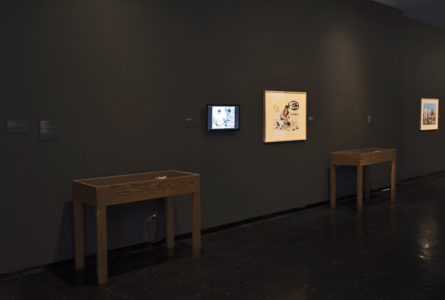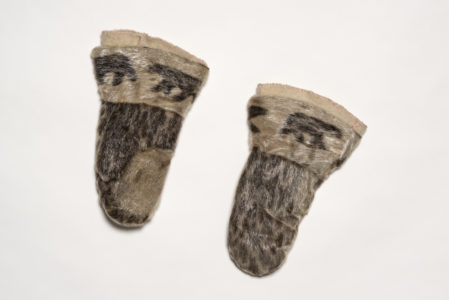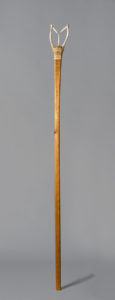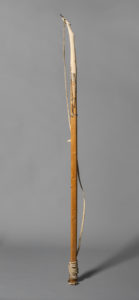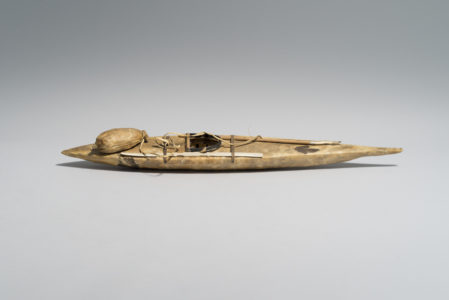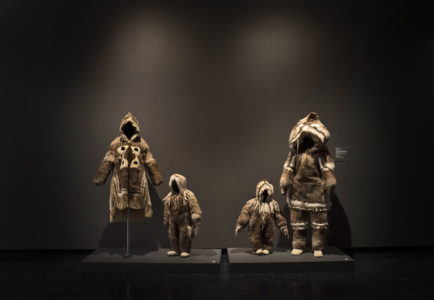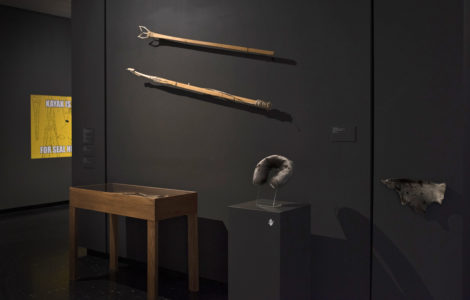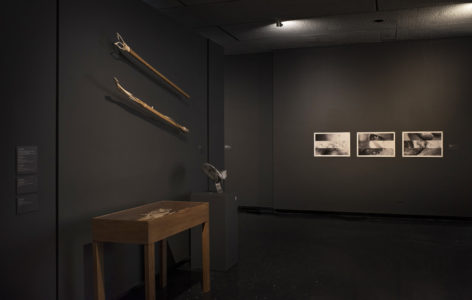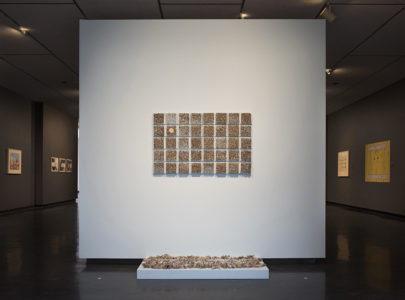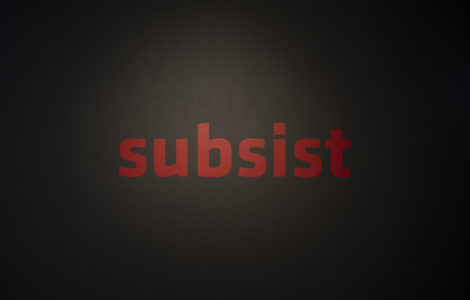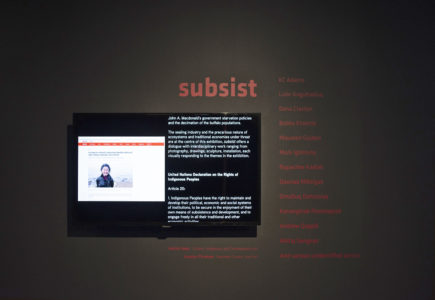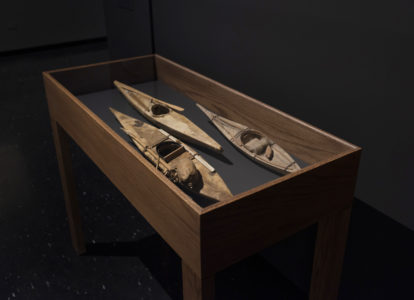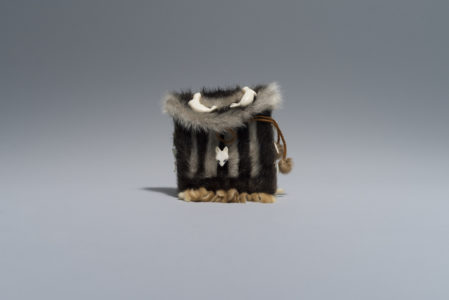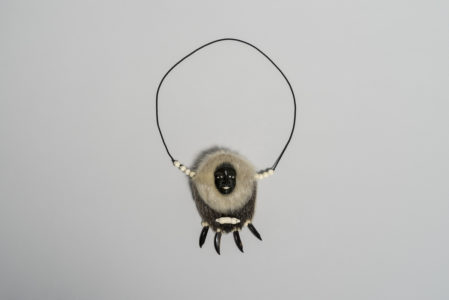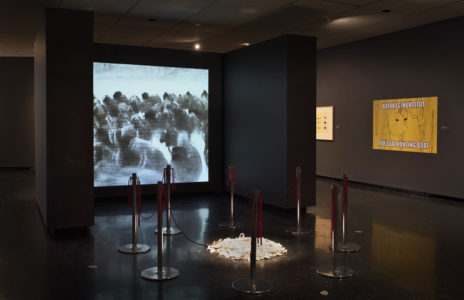The exhibition considers the controversy of the seal hunt, and Indigenous traditional practices of food sovereignty and economies. subsist draws the connection between people and the sources of subsistence, as humans have used natural resources available to them to survive in various ways. The large-scale food industry and agriculture have alienated people from the source of their food, and the controversy against hunting rights and traditional ways of food in small scale controlled environments has come into question. The exhibition reveals historical and contemporary impacts of colonialism on Indigenous Peoples’ connection to land, and knowledge about the determinants of health for Indigenous Peoples in Canada.
The sealing industry and the precarious nature of ecosystems and traditional economies under threat are at the centre of this exhibition, subsist offers a dialogue with interdisciplinary work ranging from photography, drawings, sculpture, installation, each visually responding to the themes in the exhibition.
About the Work
Maureen Gruben
Debuting at the WAG, Maureen Gruben’s Breathing Hole is an installation of 18,000 sealskin pins hand-fixed onto 40 squares of pale blue Dricore insulation. Bringing community together to complete the work over several months, her work echoes the landscape, subsistence lifestyle, and patience of seal hunting with the patience of collective endeavours.
Mark Igloliorte
Mark Igloliorte’s Seal Skin Neck Pillow utilizes the main material of his Inuit ancestors reimagined into a contemporary travel object, he refers to the detrimental international restrictions put in place by the 2010 European Union ban on the trade and exchange of seal products. Inspired by Luke Anguhadluq’s The Men Hunting Caribou in Kayaks’ yellow kayaks, Igloliorte created Kayak is Inuktitut for Seal Hunting Boat—originally a painting—it takes its form in subsist as a vinyl reproduction to embody the spirit of the meme in sharing the assertion of the kayak as a vessel integral to Inuit ways of life and shift popular perceptions of kayaks as tourist watercrafts.
KC Adams
KC Adams’ digital photography of black and white triptychs, The Gifts, juxtaposes images of the human body impacted from processed commodified food of flour, sugar and lard as gifts of colonialism which were provided as rations during the starvation policies that forbid Indigenous groups to hunt and maintain their traditional food ways.
In the news
- November 24, 2019 – Galleries West: Two New Indigenous Exhibitions in Winnipeg
- November 29, 2019 – Winnipeg Free Press: Connection between cultures
- December 9, 2019 – The Metro: WAG unveils two new galleries
- February 27, 2020 – Above & Beyond: Indigenous exhibits explore traditional practices and economy
- February 2, 2020 – Winnipeg Free Press: Today’s Lineup
Stories
Thursday, Mar 26 '20
Mark Igloliorte on seal hunting and subsistence
On view at the WAG until spring 2020, and curated by Jaimie Isaac and Jocelyn Piirainen, the exhibition subsist explores perspectives on the environment, globalization...Saturday, May 2 '20
Curator's take on subsist
WAG Curators, Jaimie Isaac (Indigenous & Contemporary Art) and Jocelyn Piirainen (Assistant Curator of Inuit Art) discuss the exhibition, subsist, which they co-curated. Learn more...Tuesday, Jul 14 '20
WAG@Home: Mark Igloliorte on subsist
Hear from Mark Igloliorte, one of the artists in the WAG exhibition, subsist, speak to his works in the show. Find out his inspiration for...WAG-Qaumajuq is open Wednesday to Sunday, 11am to 5pm. To plan your visit, check out wag.ca/visit.
